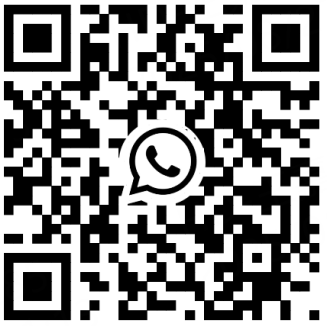
Extracting product images from Amazon is a vital task for e-commerce professionals, market researchers, and data analysts. Whether you're monitoring competitors, gathering images for your dropshipping store, or conducting market analysis, an efficient and reliable method is crucial. However, this process often presents challenges, such as navigating complex site structures and handling dynamic content. This guide provides a straightforward, five-step process to help you scrape Amazon images effectively using LunaProxy.
LunaProxy offers a robust network of residential proxies, which is essential for smooth and uninterrupted web scraping. By routing your requests through its vast pool of over 200 million real residential IPs from 195 countries, you can perform large-scale data gathering tasks with a high success rate.
Why Use a Proxy for Scraping Amazon Images?
When you send numerous requests to a website like Amazon from a single IP address, your activity can be easily identified, leading to temporary access issues. This is a standard protective measure to ensure site stability for all users. Using a service like LunaProxy allows you to rotate your IP address for different requests. This distribution makes your activity appear as if it's coming from various genuine users, significantly improving the efficiency of your image scraping tasks and allowing you to scrape Amazon images without interruption.
Step 1: Set Up Your Scraping Environment
Before you begin to scrape Amazon images, you need to prepare your technical setup. This typically involves a programming language equipped for web scraping and libraries to handle web requests and parse HTML.
Choose a Programming Language: Python is a popular choice for web scraping due to its extensive selection of libraries.
Install Necessary Libraries:
Requests: For making HTTP requests to Amazon's website.
Beautiful Soup or Scrapy: For parsing the HTML content of the product pages and finding the image URLs.
Pandas (Optional): Useful for organizing the extracted image links and other product data into a structured format like a CSV file.
A properly configured environment is the foundation for a successful project to scrape Amazon images.
Step 2: Configure LunaProxy for Your Scraper
To integrate LunaProxy, you need to configure your scraping script to route requests through its network. This involves using the proxy credentials provided in your LunaProxy dashboard.
Access Your Proxy Details: After signing up for LunaProxy, navigate to your user dashboard to find your proxy authentication details (username, password) and the proxy server address.
Implement Proxy Settings: In your Python script, you will set up the proxies parameter within your requests call. LunaProxy supports both HTTP and SOCKS5 protocols, offering flexibility for your projects.
Here's a basic Python example of how to structure a request with LunaProxy for your image scraping task:
import requests
proxy_user = 'YOUR_USERNAME'
proxy_pass = 'YOUR_PASSWORD'
proxy_host = 'pr.lunaproxy.com'
proxy_port = '12233'
proxies = {
'http': f'http://{proxy_user}:{proxy_pass}@{proxy_host}:{proxy_port}',
'https': f'http://{proxy_user}:{proxy_pass}@{proxy_host}:{proxy_port}'
}
url = 'AMAZON_PRODUCT_PAGE_URL'
response = requests.get(url, proxies=proxies)
print(response.status_code)
This setup directs your scraping traffic through LunaProxy's network, which is the key to reliable data collection when you scrape Amazon images.
Step 3: Identify and Target Amazon Image URLs
Once your environment is ready, the next step is to inspect the HTML structure of an Amazon product page to find where the image URLs are located.
Inspect the Page:
Use your web browser's developer tools (usually by right-clicking on a product image and selecting "Inspect") to examine the HTML.
Locate Image Tags:
Amazon product images are typically found within <img> tags. Look for unique identifiers such as a specific id or class that consistently holds the main product images. You will often find high-resolution image links within attributes like src or data-src.
Handle Image Galleries:
Amazon displays multiple product images in a gallery. You'll need to identify the HTML elements that contain the URLs for all thumbnail images, which often lead to the high-resolution versions.
Developing a precise method to find these URLs is crucial for automating the image scraping process.
Step 4: Write the Script to Scrape Amazon Images
With the proxy configured and the image URL locations identified, you can now write the full script. The script should be designed to visit a list of Amazon product pages, extract the image URLs, and download the images.
Loop Through Product URLs: Your script should read a list of Amazon product URLs you want to work with.
Parse the HTML: For each page, use Beautiful Soup or a similar library to parse the HTML content obtained from your request.
Extract Image Links: Use the selectors you identified in Step 3 to find all the relevant <img> tags and extract their source URLs.
Download the Images: Send a new request to each image URL to download the image content and save it to a local folder. Give the images systematic names, such as using the product's ASIN, for easy organization.
Automating this workflow allows you to scrape Amazon images from hundreds or thousands of pages efficiently.
Step 5: Manage Data and Refine Your Scraper
Running a large-scale image scraping operation requires careful management and attention to detail.
Implement Delays:
It's good practice to add small, polite delays between your requests to mimic human browsing behavior and reduce the operational load on Amazon's servers.
Handle Exceptions:
Incorporate exception-handling logic into your script to manage situations like failed requests or pages that don't load correctly. This ensures your scraper can continue running without interruption.
Organize Your Data:
Save the downloaded images in well-structured folders. You might also want to save the image URLs and associated product information (like titles or ASINs) into a CSV or spreadsheet for easy reference.
Conclusion
By following these five steps, you can build an effective system to scrape Amazon images using the power and reliability of LunaProxy's residential network. This approach enables you to gather the visual data you need for your e-commerce and market research projects with greater success and efficiency.
















































